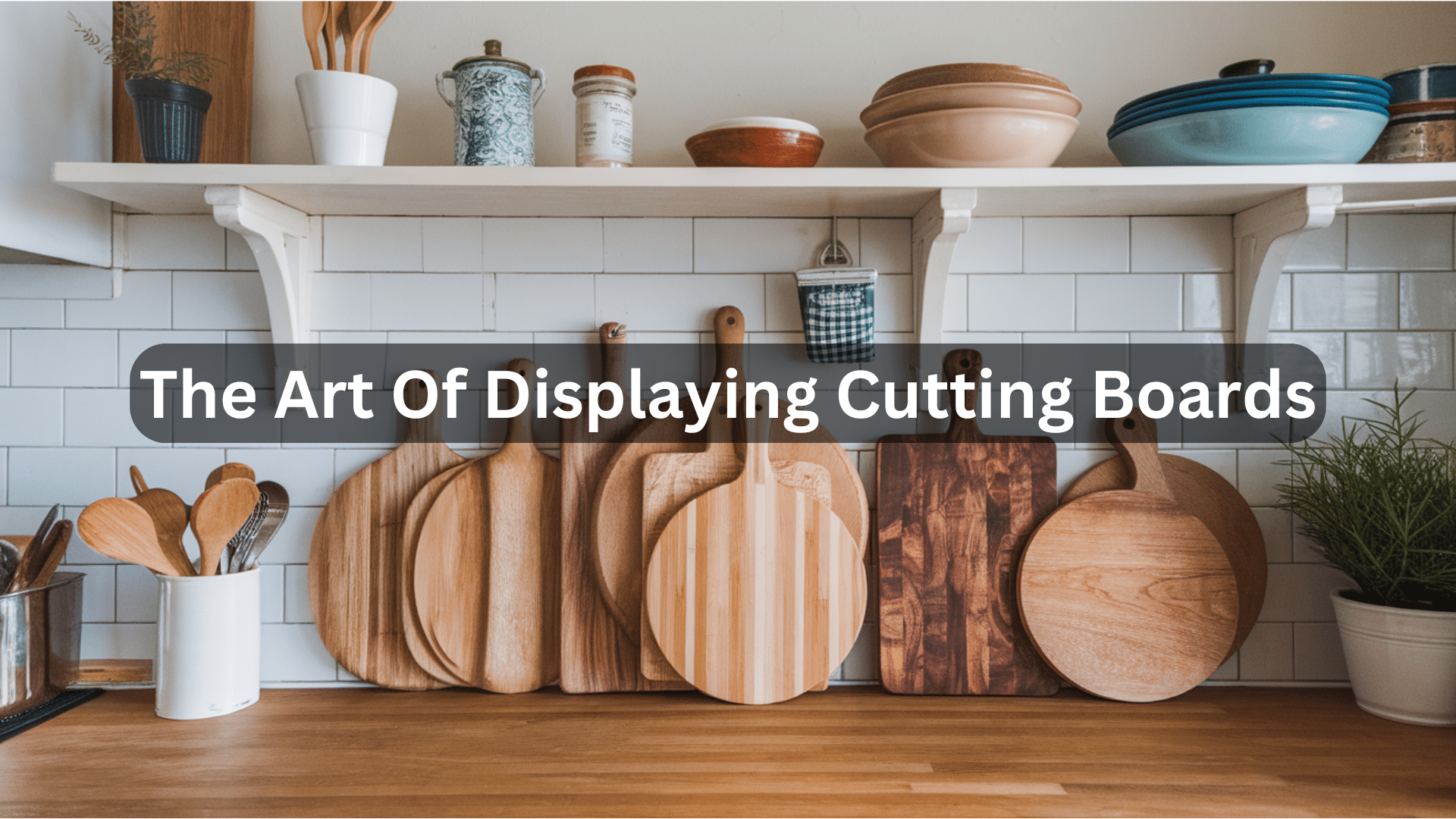Want to improve the look of your kitchen without spending a lot? You’ve come to the right place! In this article, I’ll show you how to use cutting boards as both useful tools and beautiful decorations.
You’ll learn:
- Why cutting boards make great kitchen displays
- How to pick the right boards
- Simple ways to arrange them
- How to take care of your boards
- Tips to avoid common mistakes
I’ve been designing kitchens for years, and I’ve seen how a few well-placed cutting boards can transform a space. Let’s dive in!
Reasons to Showcase Cutting Boards
Enhancing Kitchen Decor
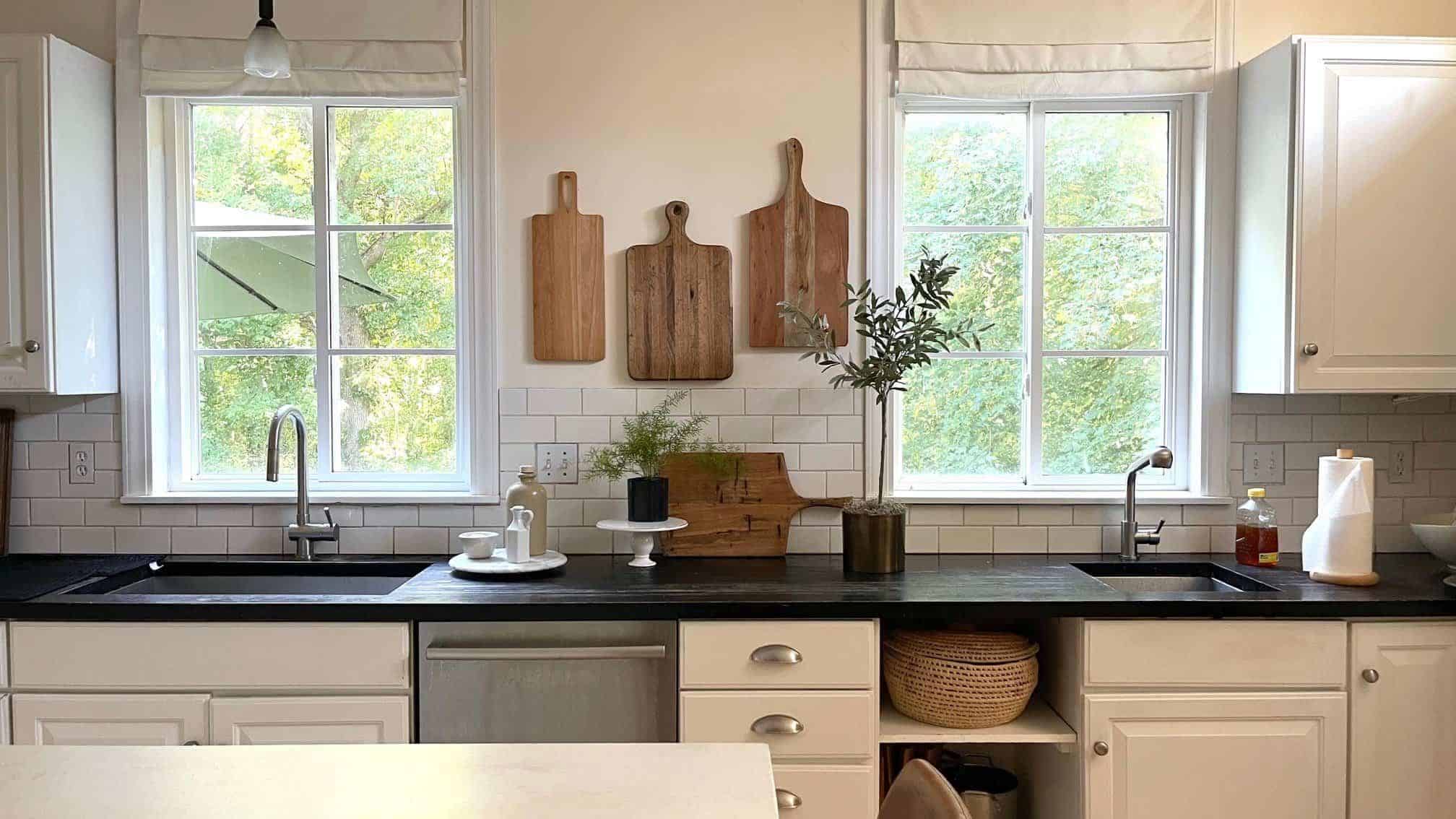
Cutting boards add warmth and texture to any kitchen. The natural grain of wood boards brings life to stark countertops and cold surfaces.
Unlike many decorations, cutting boards are useful items that earn their counter space. They bridge the gap between pure decoration and practical tools.
A beautiful maple board or a striking end-grain butcher block can become a focal point that draws the eye and adds character.
Easy Access for Cooking
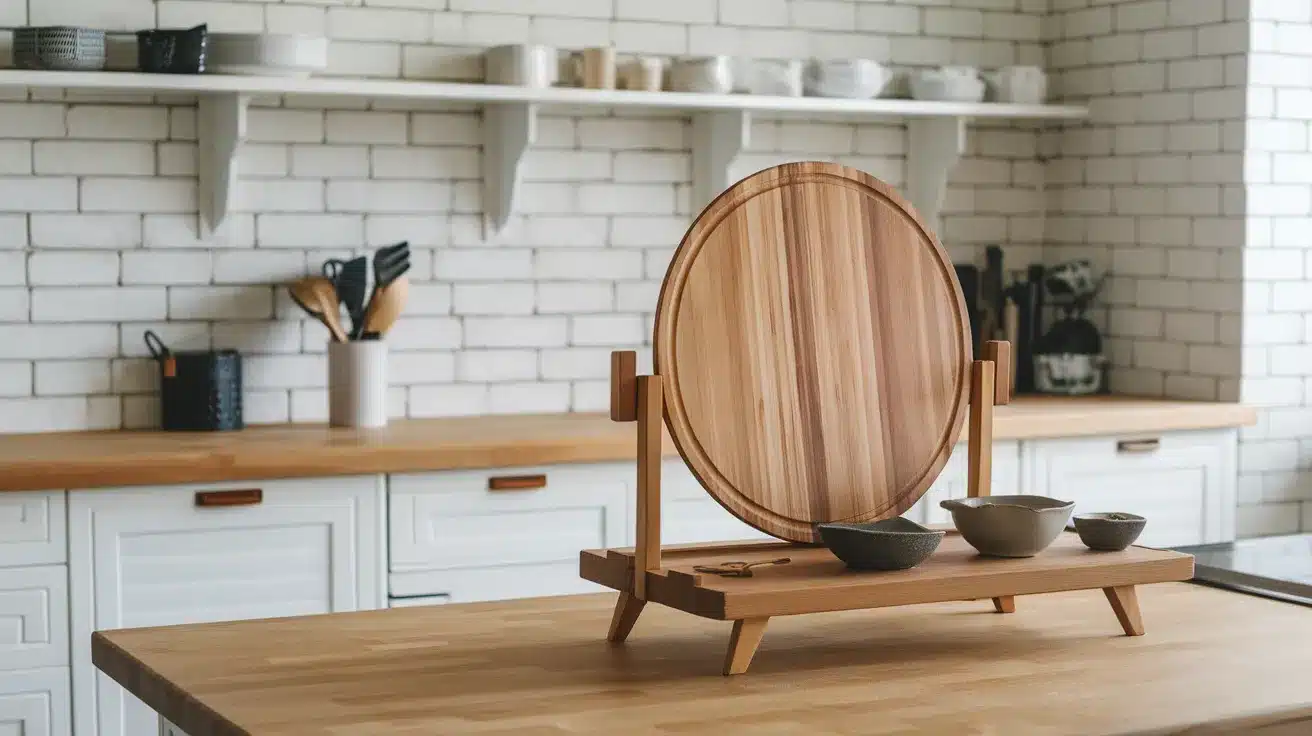
Keeping cutting boards visible means they’re always ready when you need them.
I love having my boards within arm’s reach when I’m cooking. It saves me from digging through cabinets while my hands are messy from food prep.
This setup is perfect for busy kitchens where efficiency matters.
Maximizing Countertop Space
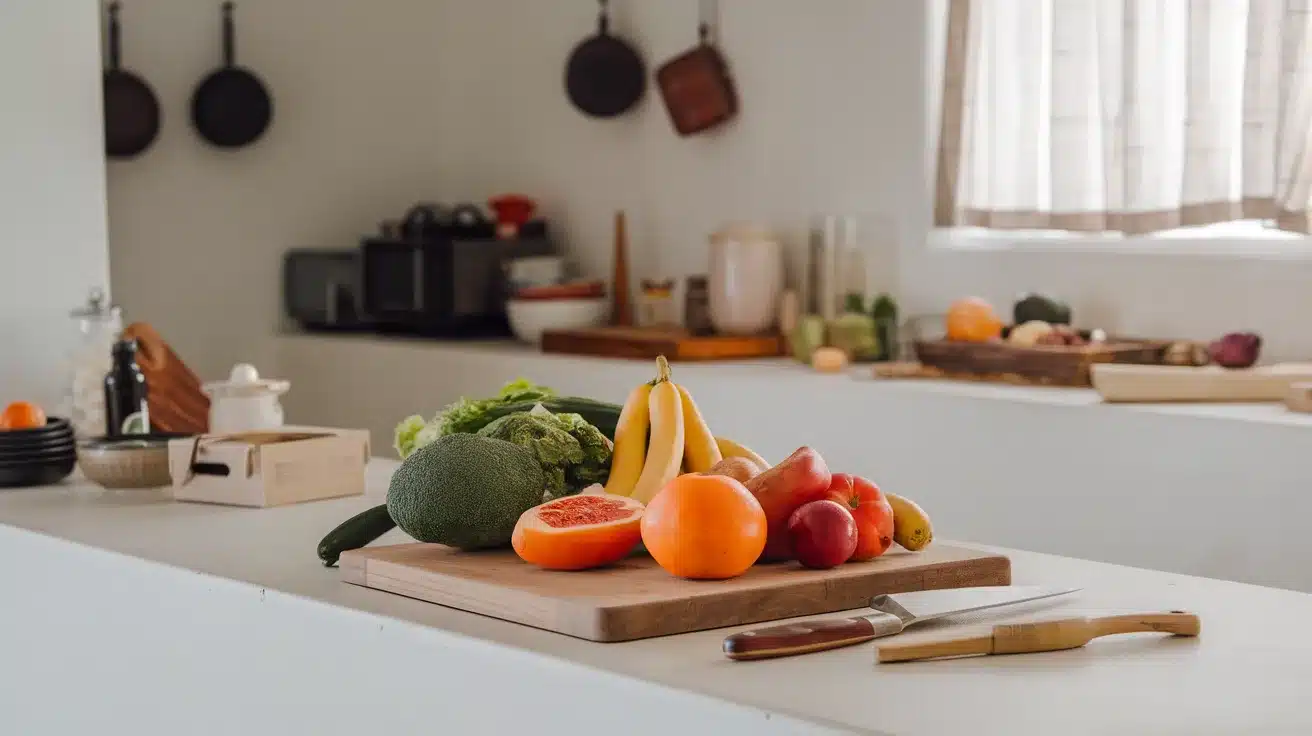
Displaying boards vertically against a backsplash saves valuable counter space. When boards stand upright, they use the often wasted vertical space in your kitchen.
This approach works especially well in small kitchens where every inch counts.
Picking the Right Cutting Boards for Display
Choosing the Best Materials
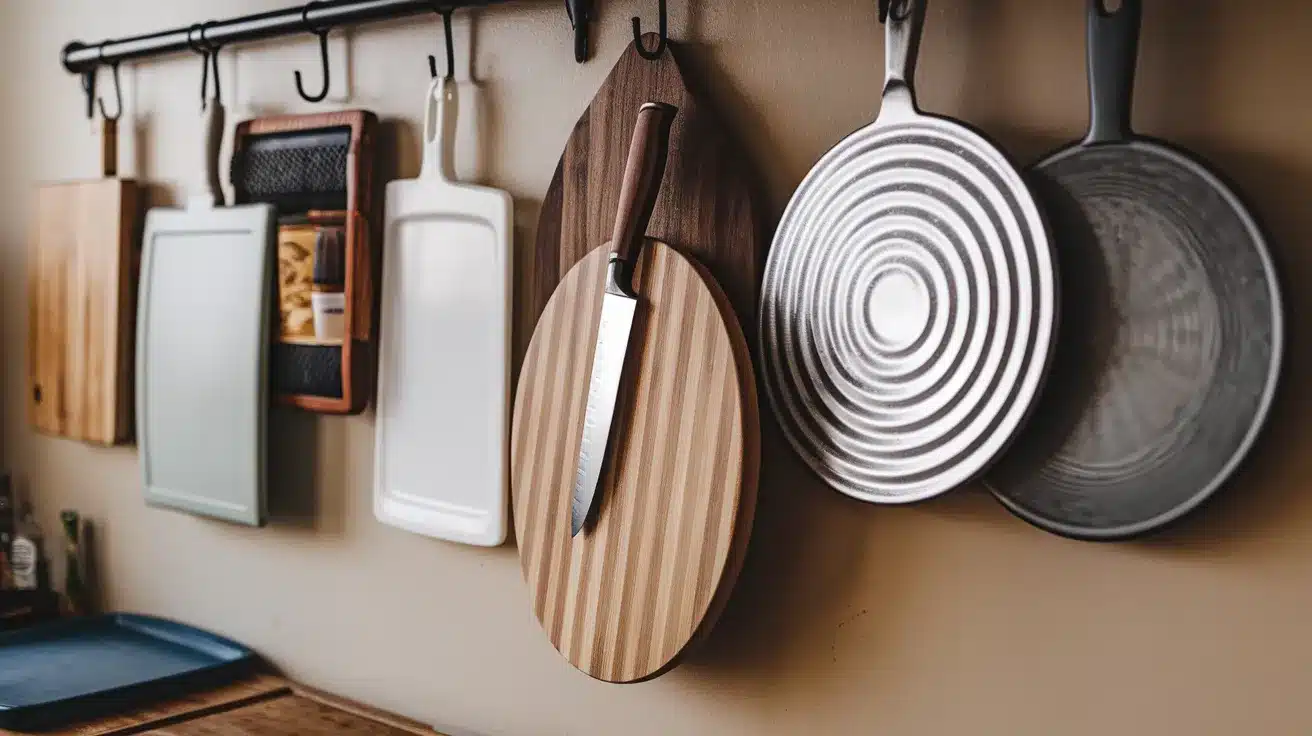
Each material brings something unique to your display:
- Wood: Offers natural beauty and warmth
- Bamboo: Provides a sustainable, lightweight option
- Marble: Adds luxury and is perfect for pastry work
- Composite: Comes in various colors to match your decor
I recommend having at least one wooden board in your display. Nothing matches the visual appeal of natural wood grain.
Mixing Shapes and Sizes
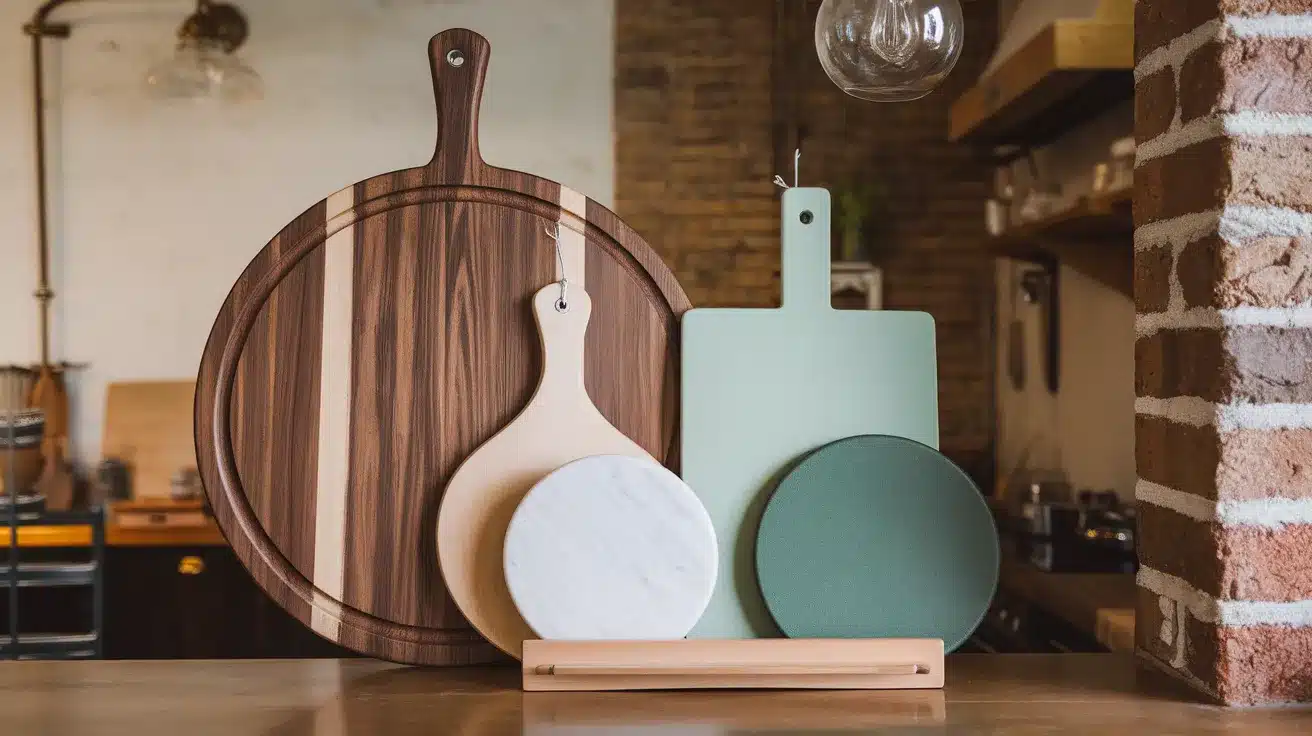
Create visual interest by combining different shapes:
- Round boards
- Standard rectangles
- Unique shapes like state outlines or breadboard styles
The key is balance. Mix one or two statement pieces with simpler designs.
Try this arrangement: Place a large rectangular board at the back, a medium-sized round board in front, and a small decorative board to finish the grouping.
Complementing Your Kitchen Theme
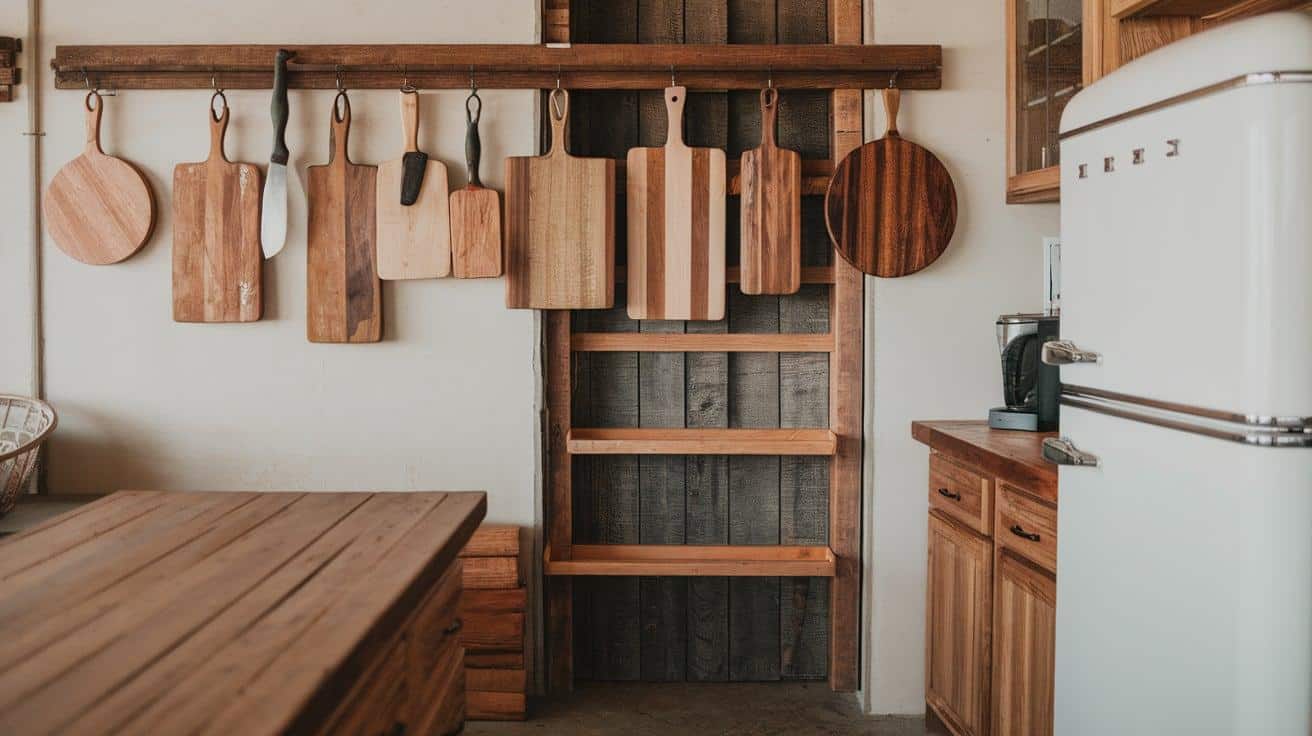
Your cutting boards should match your kitchen’s overall look. For modern kitchens, choose boards with clean lines and minimal designs. If your kitchen has a farmhouse feel, rustic boards with natural edges work beautifully. Dark woods complement white cabinets, while lighter woods pop against darker backgrounds.
Stylish Ways to Arrange Cutting Boards on the Counter
Leaning Against the Backsplash
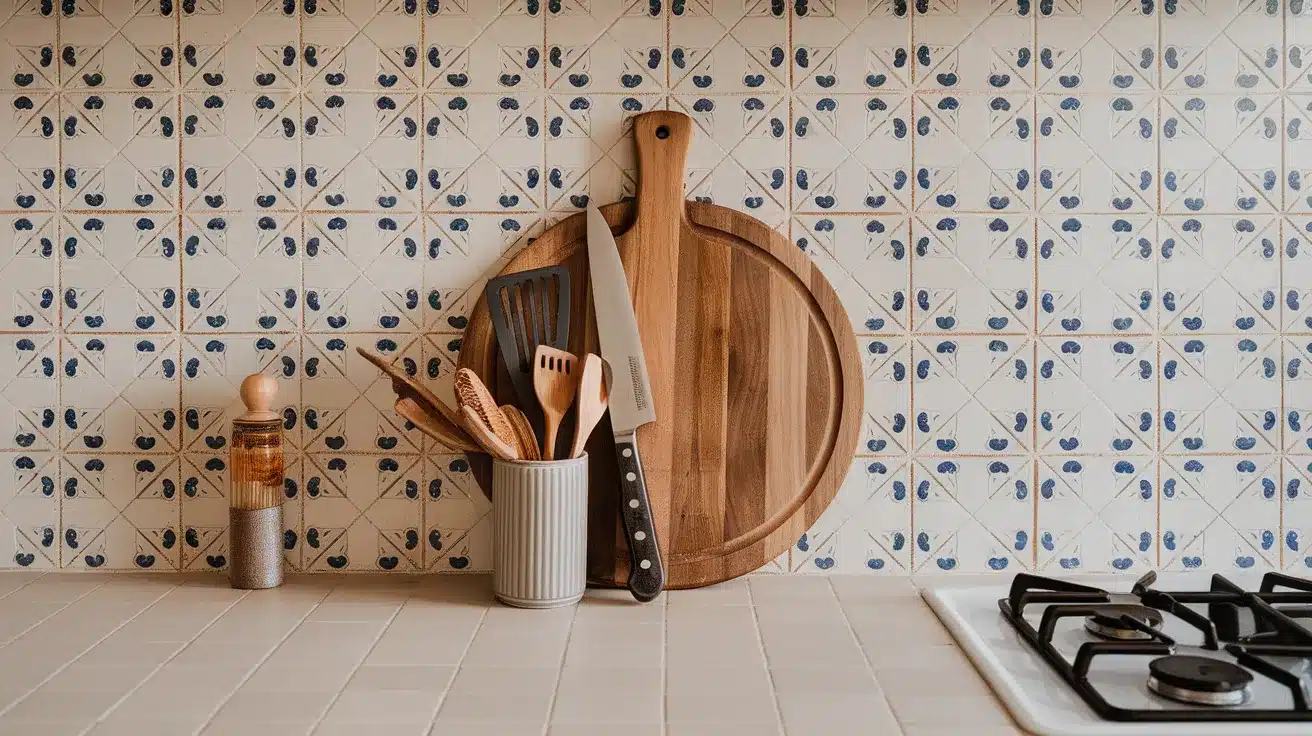
This is the easiest display method and works in any kitchen. Stand your boards upright and lean them against your backsplash. Overlap them slightly for depth. For stability, place the largest board at the back and the smaller ones in front.
Using a Stand or Holder
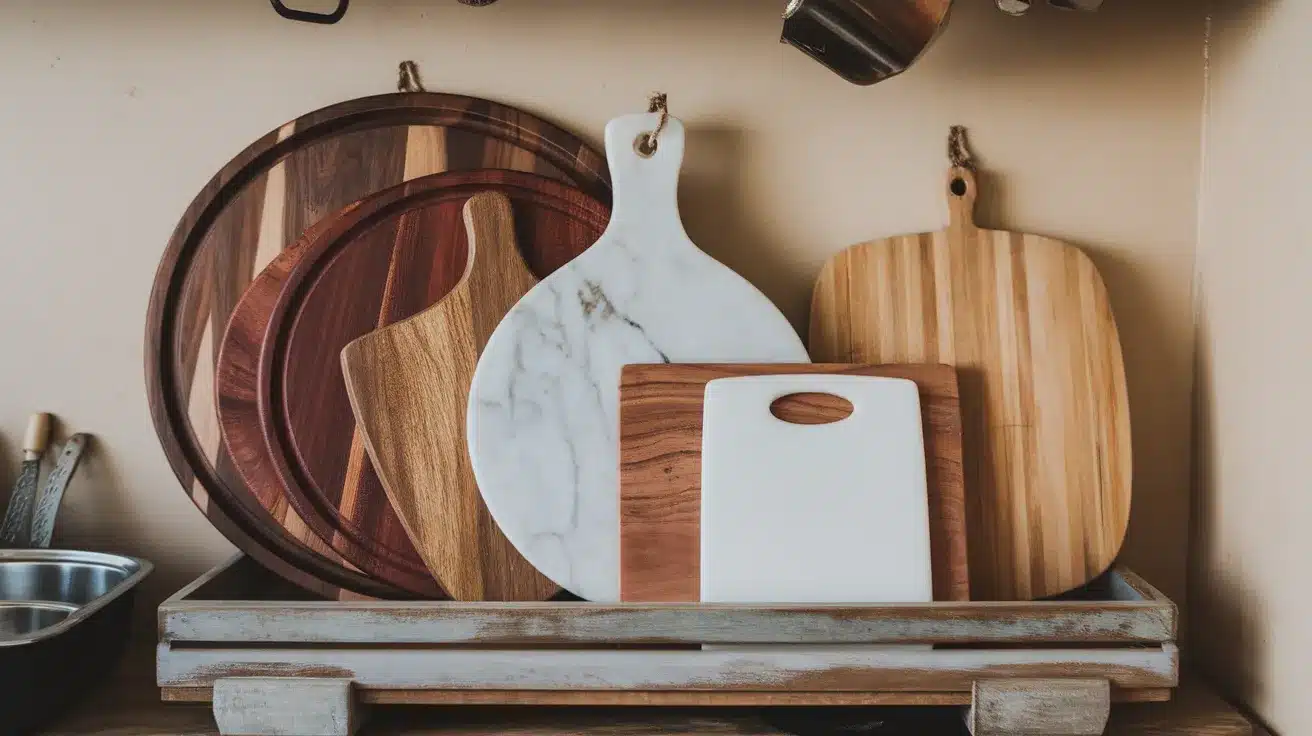
A dedicated stand keeps boards upright and organized.
Options include:
- Wooden book-style stands
- Metal plate holders
- Purpose-made cutting board stands
Stands create a more intentional display and prevent boards from sliding.
Stacking for a Layered Look
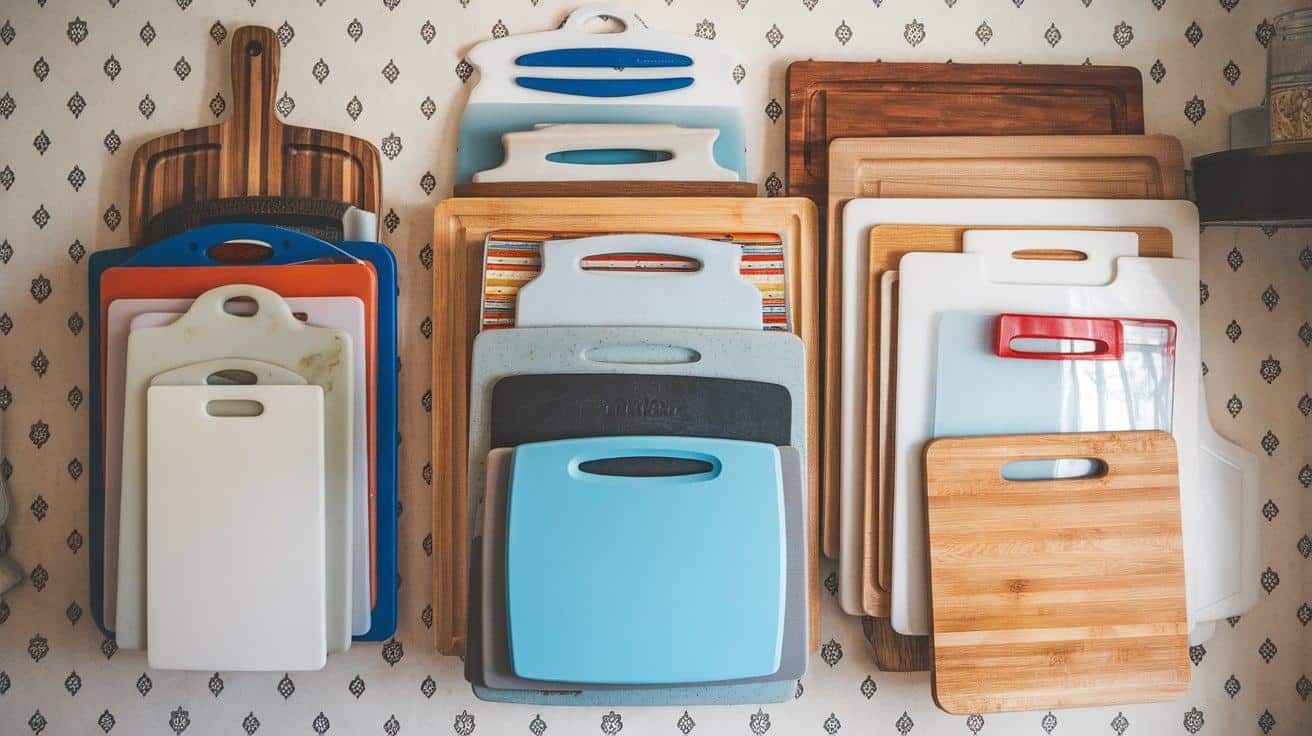
Create depth by partially stacking boards of different sizes. Please start with the largest board flat on the counter, then lean the next size down against it, partially overlapping. This creates dimension and makes your display look thoughtfully arranged.
Displaying on a Decorative Tray
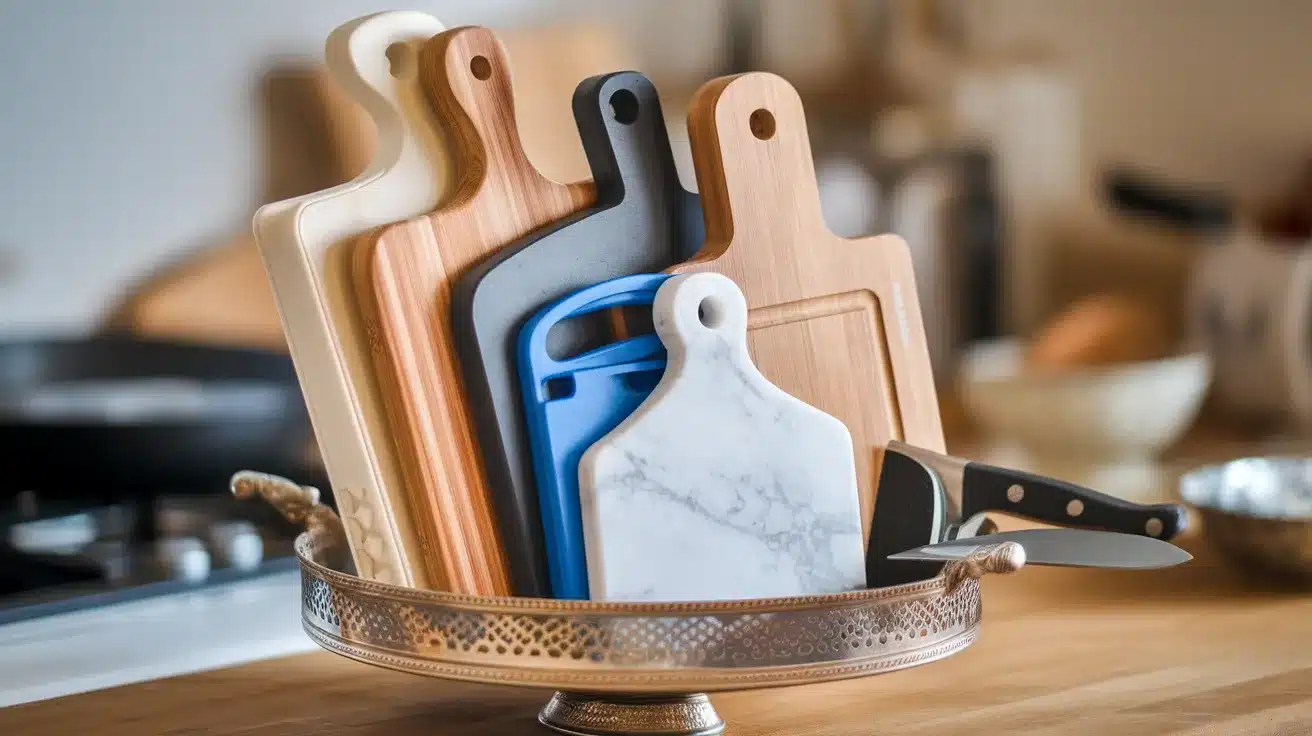
Place a collection of smaller boards on a beautiful tray. This contains your display in one dedicated area and makes it easy to move everything when you need the counter space. Trays also catch any wood dust or debris, keeping your counters cleaner.
Hanging on a Nearby Rack
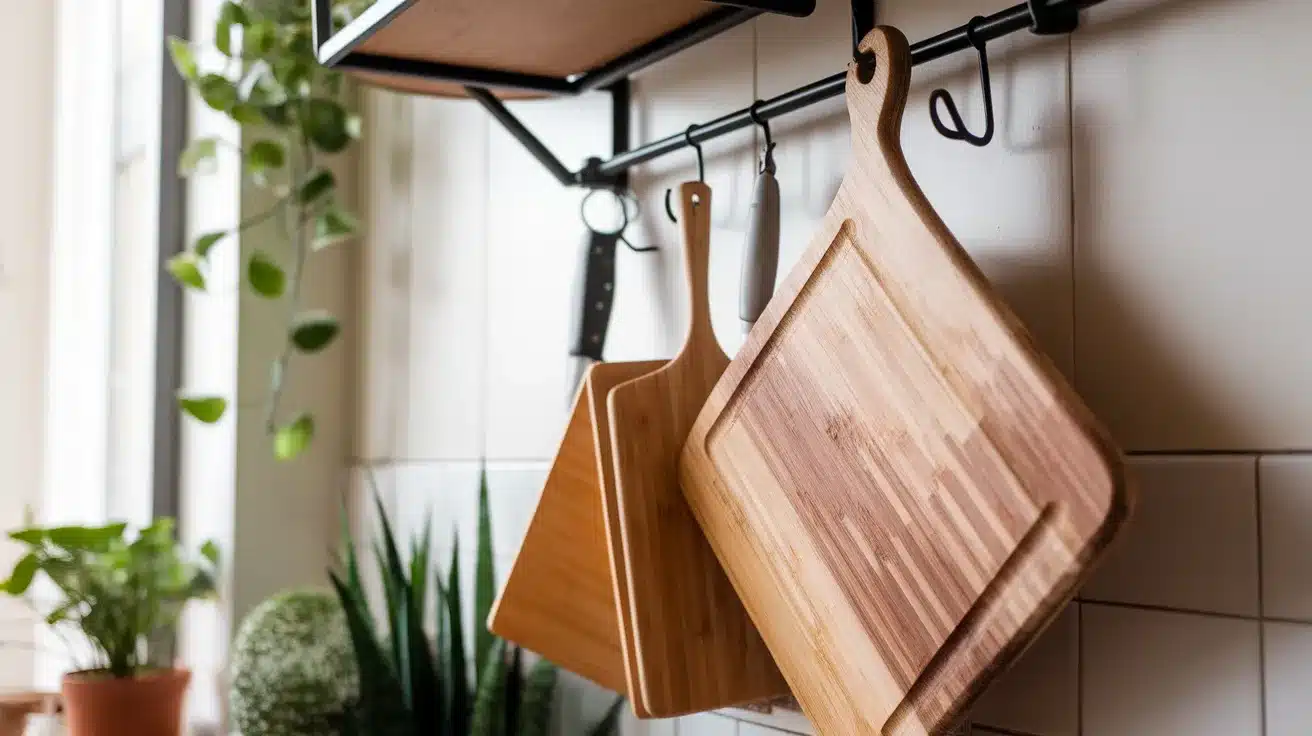
Install a simple rack or rail near your prep area. Boards with holes or handles hang beautifully and stay within easy reach. This option frees up counter space completely while keeping boards visible.
Arranging Open Shelving
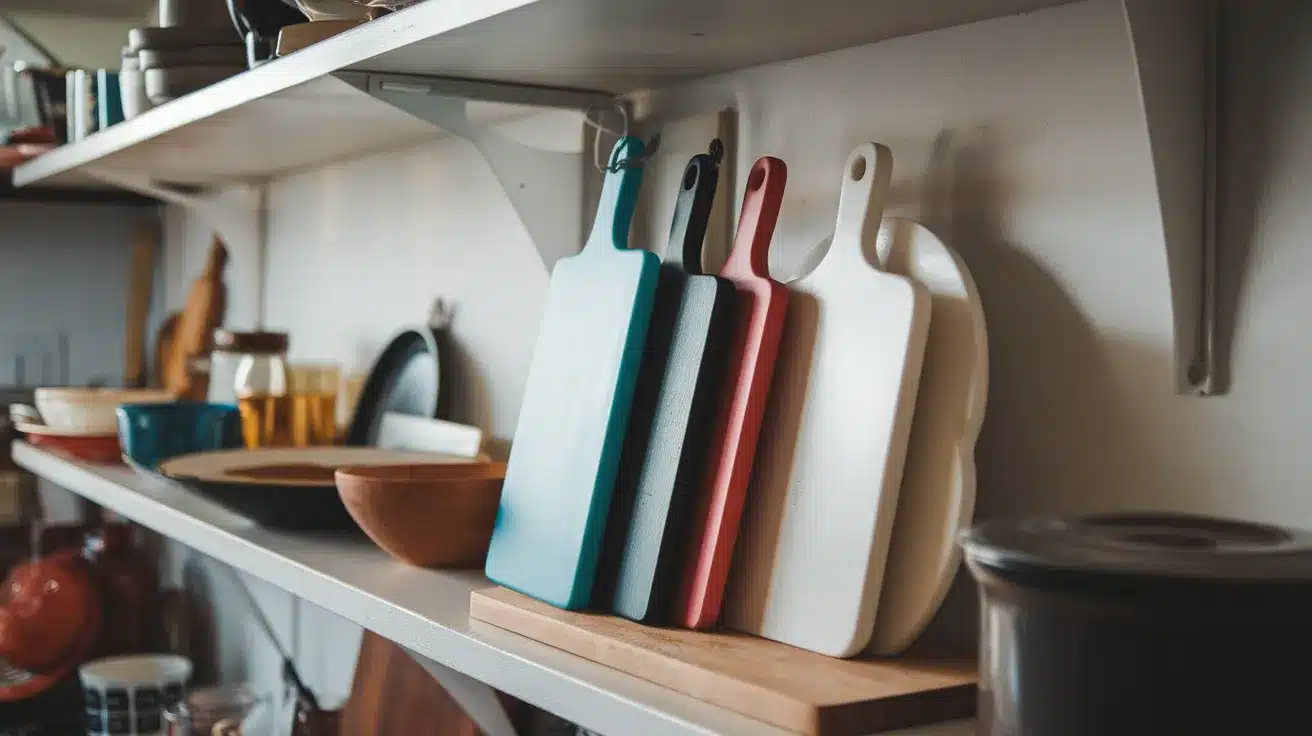
If you have open shelves in your kitchen, dedicate one to your cutting board collection. Stand them upright with their edges facing out to show off wood grain patterns. This works especially well for boards you don’t use daily but still want to display.
Caring for Displayed Cutting Boards
Regular Cleaning and Conditioning
Displayed boards need regular care:
- Wash with mild soap and warm water
- Never soak wooden boards
- Apply food-grade mineral oil monthly
- Use board cream or beeswax for added protection
Well-maintained boards look better and last longer, making your display more attractive.
Rotating for Even Use
Switch which boards you use regularly to prevent uneven wear. This keeps your display looking fresh and extends the life of each board.
I mark the bottoms of my boards to help me remember which ones I’ve used recently.
Avoiding Moisture Damage
Keep boards away from:
- Direct water sources
- Extremely humid areas
- Steam from kettles or pots
Moisture can warp and crack wood boards, ruining both their function and appearance.
Position your display away from the sink if possible.
Blending Cutting Boards with Kitchen Decor
Combining with Other Accessories
Cutting boards pair beautifully with:
- Ceramic crocks holding utensils
- Fresh herbs in small pots
- Cookbooks on stands
- Decorative salt cellars
The natural elements create a cohesive look that feels lived-in and welcoming.
Changing Arrangements for the Season
Switch up your display throughout the year:
- Spring: Add fresh flowers in a small vase
- Summer: Include colorful produce in a bowl
- Fall: Display mini pumpkins or gourds
- Winter: Incorporate pine cones or evergreen sprigs
Seasonal changes keep your kitchen feeling fresh and current.
Adding Personalized Touches
Make your display unique with personal elements:
- Engraved boards with family names
- Vintage boards with history
- Handmade boards from local craftspeople
- Boards from places you’ve visited
These touches tell your story and make your kitchen distinctly yours.
Mistakes to Avoid When Displaying Cutting Boards
Overcrowding the Countertop
Less is more when it comes to counter displays. Limit yourself to 3-5 boards in any one area.
Remember that your counter needs to be functional first and decorative second.
Choosing Boards That Don’t Match Your Style
Don’t buy boards just because they’re trendy. Select pieces that reflect your personal style and match your kitchen’s overall look.
This creates a harmonious space rather than a disconnected collection.
Neglecting Proper Care
Dirty or dried-out boards detract from your kitchen’s appearance. Set a regular schedule for cleaning and oiling your boards.
Well-maintained boards elevate your display and your cooking experience.
Conclusion
Cutting boards offer a unique blend of function and beauty in kitchen decor. They work hard while looking good, making them perfect display items.
Start with just a few boards and experiment with different arrangements. You’ll be surprised at how much warmth and character they add to your space.
Don’t be afraid to try new combinations or rotate boards seasonally. The best displays evolve over time and reflect your personal style.
Frequently Asked Questions
How Can I Keep My Wooden Cutting Boards from Drying Out?
Apply food-grade mineral oil monthly. For boards on display, you might need to oil them more often as they’re exposed to air constantly. Avoid cooking oils as they can go rancid.
What’s the Best Way to Arrange Multiple Boards Without Clutter?
Group boards in odd numbers (3 or 5) and vary their heights and sizes. Make sure they have a clear purpose in your kitchen, not just as decoration. Remove any that don’t serve both form and function.
Can I Mix Different Materials, Like Wood and Marble, in My Display?
Absolutely! Different materials add visual interest. Try pairing a warm wooden board with a cool marble one for contrast. Just make sure the overall color palette works with your kitchen.
Should I Store Cutting Boards Upright or Flat?
For display, upright is best as it saves space and shows off the boards. For long-term storage, flat storage prevents warping, especially for thinner wooden boards.
How Many Cutting Boards Should I Keep on My Counter for A Balanced Look?
For most kitchens, 3-5 boards create an attractive display without overwhelming the space. Consider your counter size – smaller counters might look best with just 2-3 boards.

